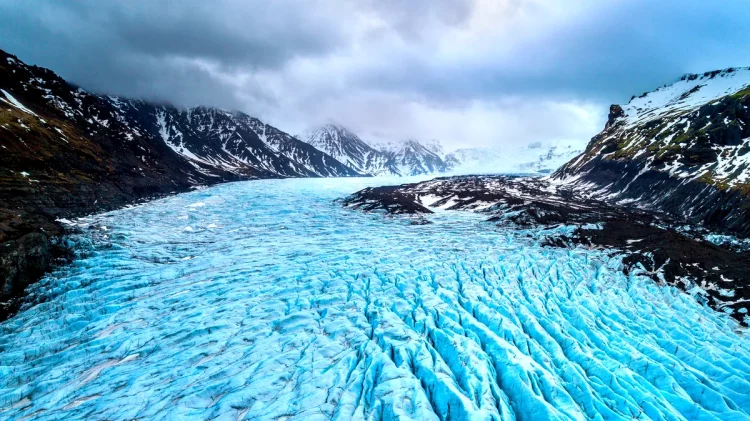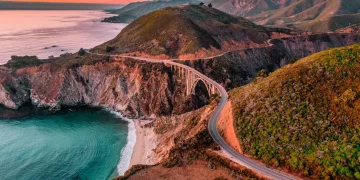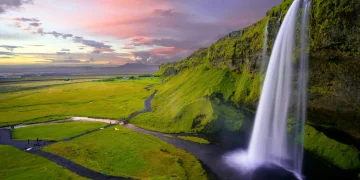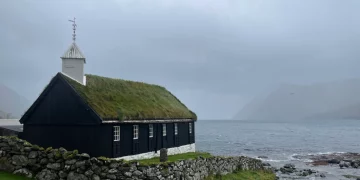Iceland is often referred to as the land of fire and ice due to its striking contrast of glaciers and volcanoes. It is a place where powerful natural forces shape the land, and its majestic glaciers meet active volcanoes, creating an extraordinary landscape. Iceland’s natural beauty is not just for the adventurous traveler but also for anyone looking to experience some of the most breathtaking and unique landscapes on Earth.
From the glimmering ice fields of Vatnajökull to the dramatic eruptions of Mount Hekla, Iceland offers a diverse range of stunning scenery that reflects the raw power and beauty of nature. In this article, we will explore Iceland’s glaciers and volcanoes, their significance, and the best ways to explore them while experiencing the magnificence of this otherworldly destination.
1. The Enormous Vatnajökull Glacier
Vatnajökull is one of the largest glaciers in Europe and undoubtedly one of Iceland’s most iconic natural features. It covers around 8% of the country’s total land area, spanning roughly 8,100 square kilometers. The glacier is home to numerous ice caps, ice caves, and glacial rivers that flow down to the surrounding landscape.
The Landscape and Geography
Vatnajökull is part of the larger Vatnajökull National Park, a vast and wild territory encompassing glaciers, volcanic terrain, and alpine landscapes. The glacier itself is the result of thousands of years of snow accumulation and glacial movement. Due to its enormous size, it is divided into several distinct glaciers, such as Skaftafell, Hofsjökull, and Öræfajökull.
- Skaftafell National Park is a particularly popular part of the Vatnajökull region, offering hiking opportunities through glacier tongues, valleys, and dramatic waterfalls.
- Jökulsárlón Glacier Lagoon is another popular attraction, where visitors can witness large icebergs floating in the glacial waters, providing a stunning visual of nature’s work in action.
Activities to Explore Vatnajökull
- Glacier Hiking: One of the best ways to experience Vatnajökull is through a guided glacier hike. These treks offer visitors the chance to walk directly on the ice, exploring the breathtaking crevasses, ridges, and ice formations. Some tours even offer the chance to venture into ice caves during winter when they are most accessible.
- Ice Caving: During the colder months, the ice caves within Vatnajökull open up to explorers. These caves, with their vivid blue and white walls, provide an ethereal experience that feels like stepping into another world.
- Glacier Lagoons: Jökulsárlón and Fjallsárlón are two beautiful glacier lagoons located near Vatnajökull. The stillness of these lagoons, combined with the towering icebergs, creates a tranquil and mesmerizing experience. Boat tours are available, giving travelers the opportunity to glide alongside the icebergs.
2. The Majestic Volcanoes of Iceland
Iceland is also known for its active volcanic landscape, which shapes the country’s topography and culture. With more than 30 active volcanoes, the country offers an unprecedented opportunity to witness volcanic activity up close. These volcanoes are the result of Iceland sitting on top of the Mid-Atlantic Ridge, a tectonic boundary between the North American and Eurasian plates.
Famous Volcanoes to Visit
- Eyjafjallajökull: The eruption of Eyjafjallajökull in 2010 was one of the most widely known volcanic events in modern history due to the massive ash cloud that disrupted air traffic across Europe. Eyjafjallajökull sits beneath an ice cap and provides stunning views for visitors. A visit to the nearby Eyjafjallajökull Visitor Centre offers insight into the volcano’s eruption history and its impact on the region.
- Mount Hekla: Often referred to as the “Gateway to Hell,” Hekla is one of Iceland’s most active volcanoes. The volcano has erupted more than 20 times in the last 1,000 years and is known for its explosive eruptions. It rises sharply above the surrounding plains and offers great hiking opportunities. Mount Hekla also provides an incredible vantage point of the surrounding landscape and is a popular spot for adventure seekers.
- Kīlauea Volcano (Hawaiian Connection): While not located in Iceland, it’s worth noting the volcanic activity in other parts of the world as a comparison. Iceland’s unique volcanic characteristics make it a key place to study volcanic activity.
The Interaction of Volcanoes and Glaciers
One of the most captivating features of Iceland is the interaction between glaciers and volcanoes, especially during volcanic eruptions. Volcanic activity beneath ice sheets can cause catastrophic glacial flooding, known as jökulhlaup, and in some cases, eruptions melt parts of glaciers, creating steam and ash plumes that shoot into the air. The blending of fire and ice creates surreal and dynamic landscapes, such as those found at Þjórsá River near Mount Hekla or at Grímsvötn, Iceland’s most active volcano beneath the Vatnajökull glacier.
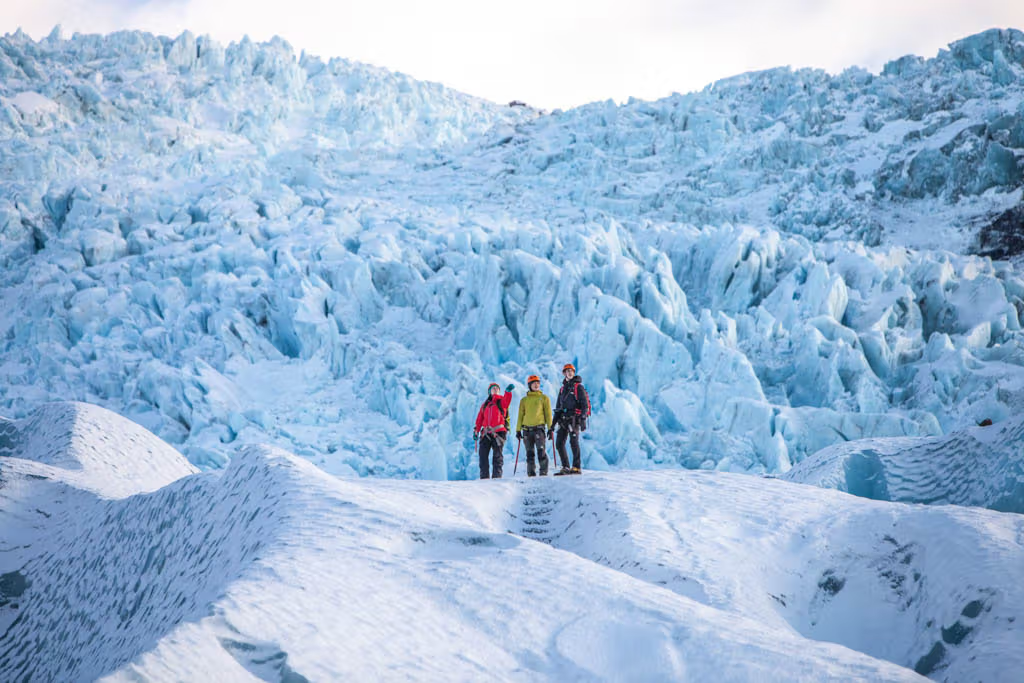
3. Exploring the Icelandic Highlands
The Icelandic Highlands, located in the interior of the country, offer a mesmerizing combination of glaciers, volcanic activity, and rugged landscapes. These remote regions are less populated and provide a true sense of adventure for travelers seeking to explore Iceland’s wild side.
Landmannalaugar: The Jewel of the Highlands
Landmannalaugar, located in the southern Highlands, is famous for its geothermal hot springs, colorful rhyolite mountains, and sprawling lava fields. The surrounding landscape is marked by steaming vents, which emphasize the area’s volcanic nature, offering unique geological features and striking views.
- Hiking and Trekking: Landmannalaugar is a popular destination for hikers. The Laugavegur Trail, one of the most famous trekking routes in Iceland, begins here and leads through diverse landscapes, including glaciers, volcanoes, and geothermal areas. The contrast between the red, green, and black slopes of the mountains and the surrounding lava fields offers visitors an unforgettable experience.
Þórsmörk Valley
Another remarkable destination is Þórsmörk Valley, a protected nature reserve surrounded by glaciers, volcanoes, and lush vegetation. This remote area is named after the Norse god Thor and is known for its stunning hiking routes and panoramic views. The valley is often used as a base for exploring the surrounding wilderness, including the nearby Mýrdalsjökull Glacier.
4. The Future of Iceland’s Glaciers and Volcanoes
The environmental changes that are taking place in Iceland due to climate change are particularly visible in its glaciers. Iceland’s glaciers have been rapidly melting over the past century, with many receding at alarming rates. This has implications for the landscape, the wildlife, and the tourism industry itself. As glaciers melt, they reveal new volcanic terrain and create new paths for exploration. However, this rapid change highlights the importance of sustainable tourism practices to preserve Iceland’s natural wonders for future generations.
Climate Change and Glacier Retreat
Many experts predict that some of Iceland’s glaciers may be significantly reduced or even disappear entirely in the coming decades. Visitors are encouraged to explore these magnificent sites now before they change irreparably. In addition to melting glaciers, rising sea levels threaten coastal areas where volcanic ash deposits and lava fields are located.
Sustainability and Preservation
Sustainability initiatives are becoming more integrated into Icelandic tourism. Eco-friendly tours, strict regulations on land use, and local conservation efforts are all steps toward preserving the fragile environments that make Iceland such a unique destination. Travelers are encouraged to respect the natural surroundings by sticking to designated trails, participating in eco-conscious tours, and supporting local conservation efforts.
5. How to Visit Iceland’s Glaciers and Volcanoes
For those eager to visit Iceland’s glaciers and volcanoes, there are a variety of ways to explore these stunning natural wonders. Most travelers begin in Reykjavik, the capital city, and take guided tours to the famous landmarks.
- Guided Tours: A guided tour is often the best way to experience Iceland’s glaciers and volcanoes. Whether it’s a glacier hike, an ice cave exploration, or a volcano tour, local guides offer knowledge and safety, ensuring visitors make the most of their experience.
- Self-Driving Adventures: Renting a car and exploring Iceland’s roads gives travelers the freedom to visit remote locations at their own pace. The Golden Circle is a popular route that takes visitors through some of Iceland’s most notable geothermal and volcanic sites, including Þingvellir National Park and Geysir.
- Helicopter Tours: For a truly unique perspective, travelers can opt for a helicopter tour of Iceland’s glaciers and volcanoes, offering aerial views of the landscapes that are impossible to appreciate from the ground.
Conclusion
Iceland’s glaciers and volcanoes offer a remarkable glimpse into the raw power of nature. The ever-changing landscapes, shaped by fire and ice, provide a perfect destination for those who seek adventure, beauty, and natural wonder. Whether exploring the frozen expanse of Vatnajökull or witnessing the eruptive power of Mount Hekla, Iceland’s stunning scenery never fails to impress. As travelers continue to visit this incredible island, it remains crucial to embrace sustainable tourism practices to ensure these natural wonders are preserved for generations to come.


